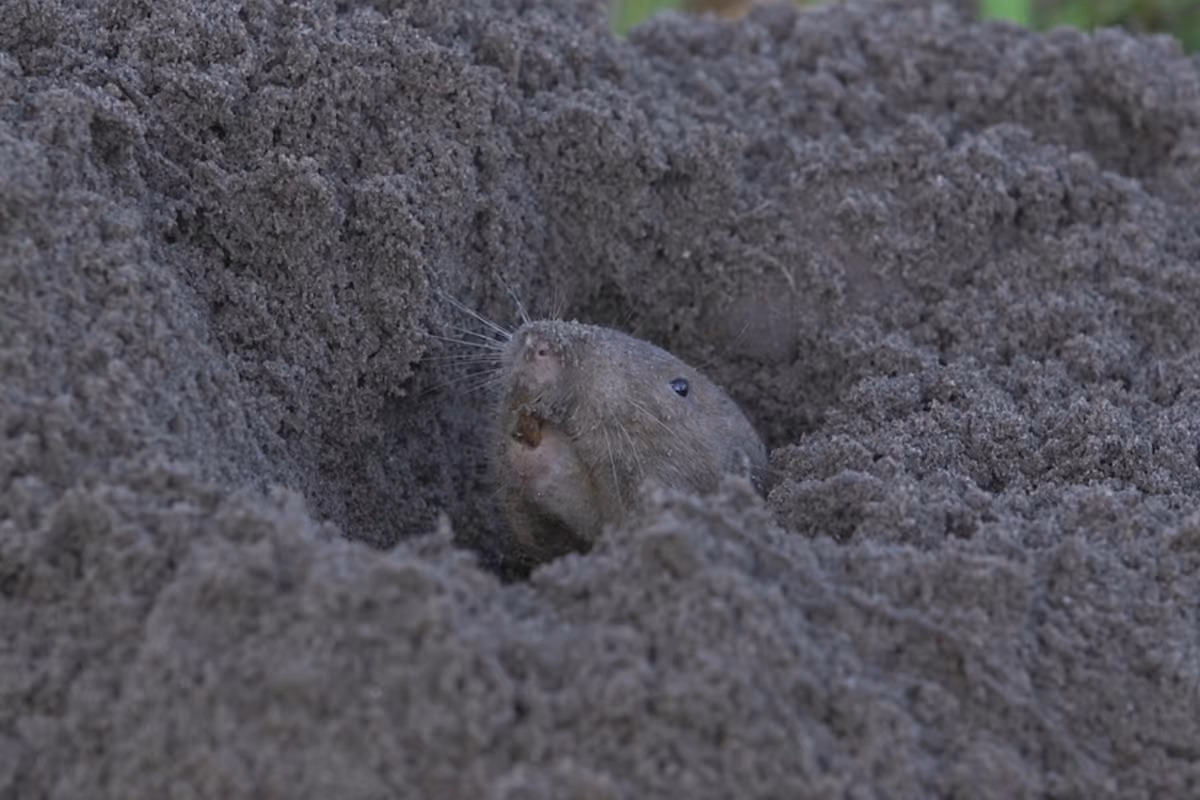
Rarely seen above-ground, a pocket gopher peeks out of one its tunnels. Veronica Selden/University of Florida
Pocket gophers spend pretty much their entire lives underground, excavating multiple horizontal tunnels that run up to 160 m (525 ft) in length.
Their diet consists mainly of plant roots, which they access within those tunnels. Doing all that digging is a lot of work, though – enough so that scientists from the University of Florida wondered if the creatures would use up more energy digging than they would get from eating any roots they just happened to find while tunnelling.
An alternative scenario suggests that as plant roots grow through the roofs and walls of tunnels that have already been dug, the gophers just revisit those tunnels to eat the roots on an ongoing basis. The plants survive the loss of those relatively small lengths of their roots, and in fact benefit from nutrients in feces which the gophers spread within the tunnels. They thus grow more roots which extend back into the tunnel again, presenting a new “crop” for the gophers to harvest.
In order to test the latter theory, Prof. Jack Putz and zoologist Veronica Selden blocked gopher-access to sections of tunnels located beneath plants at an outdoor property. They did so by taking 50-gallon (189-l) drums with the ends cut off, then sinking those drums cookie-cutter-style into the soil around the plants, forming an impenetrable underground cylinder that contained part of the tunnel. This didn’t harm the gophers, as they still had plenty of roots to eat in other tunnels.
With the roots now protected from being eaten, the scientists proceeded to measure the rate at which they grew into the tunnel, and thus the rate at which they provided food energy. The researchers determined that while eating regrown roots in existing tunnels would give the gophers enough energy to gradually extend their tunnel networks as needed, the animals would definitely not get enough food energy if the only roots they ate were those that they discovered as they were digging.
That being said, the scientists do admit that there are differing opinions as to whether or not what the pocket gophers are doing can actually be considered farming.
“If farming requires that crops be planted, then gophers don’t qualify,” said Putz. “But this seems like a far too narrow definition for anyone with a more horticultural perspective in which crops are carefully managed – such as fruit trees in forests – but not necessarily planted.”
–
https://www.eurekalert.org/multimedia/940458
Gopher pulls an entire plant down by the roots into its tunnels. Norm Douglas
–
A paper on the study was recently published in the journal Current Biology.
Sources: University of Florida, Cell Press via EurekAlert
–
–

























Please keep comments to less than 150 words. No abusive material or spam will be published.
I think it’s more likely someone looking for media attention.